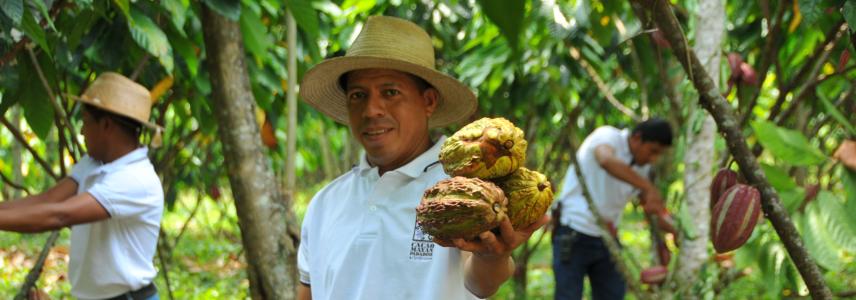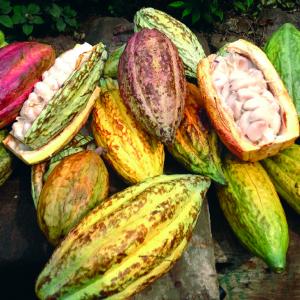Flavour catalogue: A valuable marketing tool for Central American cocoa exporters

As part of the Connecting Central America project, CBI is creating a flavour catalogue. This catalogue profiles 60 specially-selected cocoa samples from 6 Central American countries. It is a valuable tool for promoting the Central American varieties of fine flavour cocoa. Representatives from organisations involved in creating the catalogue share its importance. They also talk about some of the challenges they have faced and the benefits the catalogue will have for farmers, exporters and the region.
Two goals: more knowledge and more exports
The Connecting Central America project focuses on empowering cocoa businesses and helping them sell their products to top clients. Jörn Berger, CBI’s cocoa and chocolate consultant in Central America, explains how the flavour catalogue unites these 2 goals. “For the catalogue, we trained producers and tasting panellists on:
- sensory evaluation, and
- how the post-harvest process affects the flavour of their beans.
This is something we have worked on since the beginning of this 4-year project. At the same time, the catalogue will be a promotional tool. Cocoa producers can share it with buyers at trade fairs and other matchmaking activities. They can use it to show the diversity of Central American cocoa and promote their products at an international level.”

Rocío Fallas Salas coordinates the cocoa programme for the Ministry of Agriculture and Livestock of Costa Rica. She confirms the value of the catalogue for producers. Rocío explains, “Many cocoa producers are unaware of the quality of their beans. Or they lack the vocabulary to describe the flavour profile in detail. The flavour catalogue will help them demonstrate the quality of their cocoa and negotiate accordingly.
To prevent a flavour catalogue based on subjective opinions, a tasting panel determines the flavour profiles. The panel follows internationally recognised guidelines, including the International Standards for the Assessment of Cocoa Quality and Flavour (ISCQF) and the Cocoa of Excellence (CoEx) assessment.”
Sustainable cocoa production and flavour diversity
The flavour catalogue is a digital and printable document. It describes 60 cocoa samples from the 6 countries participating in the project: Costa Rica, El Salvador, Guatemala, Honduras, Nicaragua, and Panama. Each country also proposed tasters for the tasting panel. Rocío highlights the importance of this regional teamwork. “When it comes to fine flavour cocoa, we want to profile ourselves as the region of Central America and not as individual countries,” she says. “This catalogue allows us to position ourselves as one region with sustainable cocoa production and diversity of flavours.”
Álvaro Moreno is a specialist in agro-industrial export development with the Export and Investment Promotion Agency of El Salvador (PROESA). He adds, “We can achieve more together. Collaborating like this also means that the results are objective and transparent. No one can change the results in their favour.”
CBI plans to present the flavour catalogue in June 2022. Each country will receive a template to use as a starting point. “We provide a template for producers, business support organisations, ministries of agriculture, and the region of Central America,” Jörn explains. “It is impossible to include everything, so the aim is to show a range of available qualities. Later, each party can add samples or focus on different aspects. Users can redesign the template, meaning they do not need to start from the beginning each time.”
Setting up a tasting panel
Álvaro explains that one of the biggest challenges of this project was logistics. “We are currently finetuning the tasting panel,” he says. “It involves collecting 10g cocoa paste samples from various producers and sending them to each taster. Postal and courier services face infrastructural challenges in Central America. There is also a lot of phytosanitary paperwork involved. Once the tasters have the samples, our sensory evaluation expert will permit them to carry out the first evaluation. This step ensures that the tasters are all up to the same high standard. They must all work within the same parameters before evaluating the flavour catalogue samples.”
A tool with lasting impact
Jörn explains that the Connecting Central America project aims to work alongside local partners to support cocoa producers and provide them with lasting skills and knowledge. “The flavour catalogue project is an excellent example of our desire to leave behind a tool with an impact beyond our project,” he says. Álvaro confirms the value of sharing knowledge, “CBI has been an example to us.” He adds, “The Connecting Central America project has done exactly what it set out to do. The catalogue has resulted in better skills and knowledge. And it is a tool that companies can use even after the project has ended.”
More information
For more information about what the participating companies are achieving, visit the Connecting Central America Facebook Community.
Are you a European importer interested in products from Costa Rica, Panama, Nicaragua, Guatemala, El Salvador or Honduras? Contact CBI for more information or to meet with the suppliers in this project who are being trained to export to Europe.
The European Union (EU) co-finances the Connecting Central America project. The Secretariat for Economic Integration of Central America (SIECA) coordinates it. This project is part of the Central American Regional Economic Integration (INTEC) project.